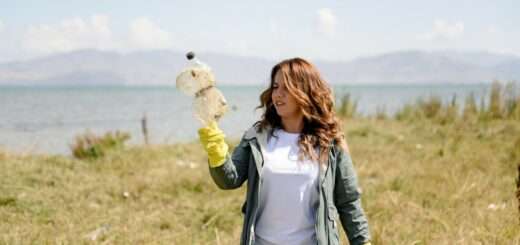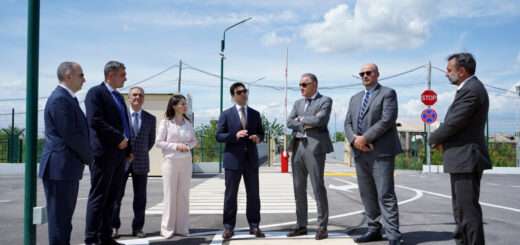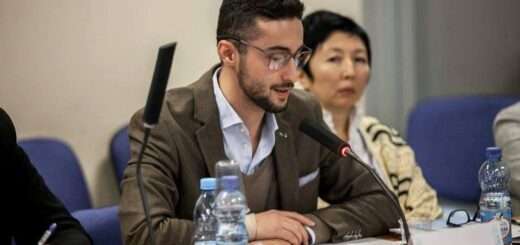ETERNITY OF ARMENIAN SPIRIT OR THE WOUNDED WORLD: WHO REMEMBERS THE ARMENIANS?

Documentary Photography Project by
By Dr. Marina Mchitarian-Lazaridou
I have seen the sorrowful children’s eyes in the crossfire.
All this reminded me of 1915.
#NeverAgain is NOW.
Dr. Mchitarian-Lazaridou is of Armenian-Greek descent. She was born in Armenia. She lived, studied, and worked in five countries. Currently she is based in Greece. Ph.D. in Physics and Mathematical Simulation, 2 postdocs in Archeology, 15 years of work at the Christian organization. The last six years her professional mission was connected with the conflict-ridden zones. In 2021-2022 she was intensively visiting Nagorno-Karabakh within the framework of the collaboration with the “SAVE ARMENIAN MONUMENTS’’ NGO (New York).
She authored 10 documentary photography projects, held 10 photographic exhibits (three of which in the USA), and 5 photo art projects. In 2020, Dr. Mchitarian-Lazaridou completed the project ‘’Women of Nagorno-Karabakh: War, Identity, and Peace’’: the 1st project from the series ‘’Women in crossfires’’. In 2021 Dr. Mchitarian-Lazaridou was nominated for the ‘“Women Building Peace’’ Award (US Institute of Peace, Washington, D.C.). In May 2022 two photographic exhibits dedicated to Artsakh were held in Los Angeles and New York. Her first book “Silence of Memories’’ has been drafted and ready for publication. She runs 7 websites.
Webpage: https://marinamkhitar.webnode.page/
Email: marinamkhitar@gmail.com
The multimedia projects are listed here.
As a grandchild of the Armenian genocide survivor, I know what is intergenerational trauma very well. The darkest page of Armenian history has been sealed in my surname. I keep memories from my childhood when my Armenian grandfather was telling his story of survival.
”1915….a 8-year old boy from Mush finds refuge in Armenia with a group of other orphans… The ancestral mountains inspire consolation (’’mkhitarutun’’ in Armenian)…. Such was the blessing bestowed upon the family of Mkhitaryans….”
In 2015 when the Armenian people marked the Armenian genocide centennial, I authored the project ‘’Can memory trigger a genocide prevention?’’ dedicated to the Armenian, Greek, and Assyrian genocides.
‘’Memory is a leading tool for any atrocity prevention. Only memory can’t trigger such a prevention. Collective memory can be considered in this context. Without collective memory, without unity there is no humanity. Once we understand and accept this, we can turn mountains. Memory is not a storage of different moments, it is not pointillism, it is not a static system.
Can we enhance our memory, collective memory? What does it mean to enhance memory? It does not mean we have to increase storage in our brain system. We have to be more dedicated to human values and only in that case our memory will be socially stronger’’. (Excerpt from the ‘’Silence of Memories’’).
In this turbulent and wounded world a genocide prevention (or any atrocity prevention) is problem #1. Paraphrasing the famous quote, ‘’every atrocity is against children’’. In conflict-ridden zones war never ends. The children’s eyes mirror the pain of the souls. How can we stop what is unstoppable? How can we, as the international community, be united and fight against evil geopolitical deeds forcing millions of people to lose their homes and become refugees?
Summer 2014. One of the border villages adjacent to the Armenian-Turkish state border. The Armenian genocide 2nd generation survivor shared his family exile and survival story. His parents were born in the village on the Turkish side. They settled down in the Armenian village alongside the border. They thought that one day they would be back home. What is HOME to you? A place where you were born, a feeling in your heart, a place where your parents were buried? All of us have our understanding of HOME. In Greek there is a beautiful word NOSTOS which means “return home’’, “homecoming’’. The Armenian people live with the feeling of NOSTOS in their souls. We can consider nostos in the extended format – return to roots, national identity.
Antelias, Lebanon, 2018. I was capturing the Armenian Genocide Memorial next to the Armenian Church in the Catholicate of Cilicia. The weather was sunny. After reviewing the mobile shots at the hotel, I noticed that my silhouette was reflected in the memorial with the genocide victims’ bones.
Can we quantify suffering? The only quantitative expression of suffering is the time passed after the 1915 genocide and the number of the victims. Suffering is not subject to a quantitative frame. If somebody X-Rays our souls, he/she will see the fingerprints of suffering of our ancestors during the Armenian genocide.
The wounded world: who remembers the Armenians? By remembering 1915, the first genocide of the 20th century, the international community does the first step in the direction of a genocide prevention.
I was born and educated with an ecumenical religious spirit. For me a spiritual vector of any society is a key factor. I witnessed the role of the Armenian Church in the aftermath of the 2nd Nagorno-Karabakh war (2020). While working on the project WOMEN OF NAGORNO-KARABAKH: WAR, IDENTITY, AND PEACE, one of my heroes stated: “My dream came true. I was christened and with the cross & the gun went to the frontline”.
By commemorating the Armenian genocide victims, we pray for a world without genocides. By praying for Resurrection, we pray for Hope. Without Hope there is no Light, without Light there is no Hope.
Arshile Gorky wrote: ‘The eyes of Armenians speak long before the lips move and long after they cease to.’ When I look at the eyes of children, I want to see shining eyes full of spring and love. It does not matter where they live – in Ukraine, Armenia, Gaza, Israel, Nicaragua, etc. Children’s eyes are a litmus paper for any society.
If your organization is willing to hold such a photographic exhibit, pls contact Dr. Marina Mchitarian-Lazaridou at marinamkhitar@gmail.com.
The teaser of the project can be watched here







